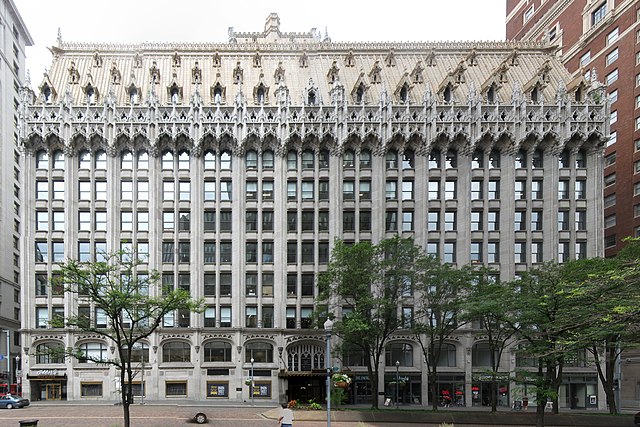
This 1980s Postmodernist tower makes a dramatic impression from the middle of Stanwix Street.
Camera: Canon PowerShot A590 IS.

The Diamond Building is by MacClure and Spahr, who skillfully met the challenge of a dauntingly irregular site by filling it with a building that looks as if it’s meant to be this shape. It was originally the headquarters of the Diamond Bank, whose logo can still be seen in metal grates at ground level.


Many of the interior details are preserved inside the Diamond Building. Here we look down the stairwell with its ornate railings.

The only way to get a complete view of the Grant Street front of the Union Trust Building is with a composite of several photos. There are stitching errors, including a spooky phantom wheel rolling down Grant Street, but at least the picture gives us a better idea than we usually get of the face of this massive building, which was intended by Henry Frick to be the best shopping arcade in the country. It was designed in the Flemish Gothic style by Frederick Osterling.

There are thousands of pictures of the skyline of Pittsburgh by night; this is not the best, but it is probably the most up-to-date on the Web at the moment. The skyline is changing, after all, so all those other pictures are completely passé.
A very-wide-angle view of the Granite Building, designed by the prolific and versatile Charles Bickel for a German bank. He has made use of every texture and shape of which granite is capable, and the result is a particularly lively, if perhaps a bit jumbled, rendering of German Romanesque.
You may notice some ghostly figures, including a spectral automobile, in the photograph. Father Pitt would love to be able to claim privileged access to the wonders of the invisible world, but in fact this is a composite photograph taken on a busy street, and people will continue to move even when they see an older gentleman in a cocked hat trying to take a composite picture.
The Granite Building is just across Wood Street from the Wood Street subway station.